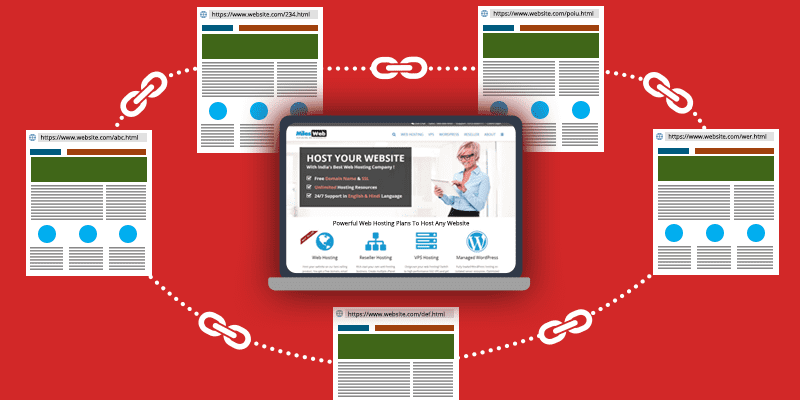There are several rules that one need to follow while preparing any content for content marketing in SEO. There are lots of things that need to be considered while doing content marketing. Typically in the field of SEO, internal linking plays a vital role. In SEO ongoing activities like forum posting, blog commenting, blog posting, article submission internal linking is important and it passes the benefit to the reader as well to get more information.
Before going in depth about internal linking, first, we need to understand what is internal linking?
An Internal link connects one page of a website to several pages on the same website. In an internal linking, source link and target link are the same. It provides a reader further reading options. For e.g. At the end of the paragraph or a line you can simply hyperlink a keyword or pass the web page address through URL indicating that you can get more information just by following the given link.
Also, it helps to improve keyword ranking. Suppose there’s one keyword on a certain page and if the page is having the same name(title) as that of keyword then you just have to add that keyword in the webpage and simply hyperlink that keyword with the help of anchor tag. By doing this, search engine bot will understand that there’s a link present over a keyword and it will pass the benefit to SERP (Search Engine Results Page) as well. It also helps google to crawl the website. Internal links in the article or blog help to index pages more efficiently.
The seven commandments of internal linking are as follows:-
1. Create lots of content: –
The first step to start internal linking is, you should have a website containing multiple pages in it so that you can link those pages accordingly. To segregate multiple pages you need focus on the content so that you can easily build the multiple pages. You just have to add this content to multiple pages so that you can do internal linking quickly. While writing any blog or article placing a link with respect to the keyword is a crucial task. It should be always in the second paragraph or later not in the first. Flowcharts, bar graphs, diagrams etc. are not considered as content part because they are just the pictorial representation of any information. Actual linking is done to only text part, so add more text content to the document to do internal linking.
Also Read, Tips On Writing SEO Friendly Content For SEO Beginners
2. Use anchor text: –
Anchor text is the visible characters and words that display when linking to another document or location on the web. It is the clickable text in a hyperlink. To tag any link you can use anchor text.
For e.g.:
<a href="URL”>Example Anchor Text</a>
Even you can link images, make sure that the image is properly alt-tagged.
3. Deep Link: –
The deeper your links, the better performance you will get. If you want to pass the link authority to some of the important internal pages then you need to form proper structure so that you can build the same on selected ones. Also, it provides navigation for users and search engines.
If the internal links are planned properly, then it could help in passing the link authority to some of the important internal pages. While building and designing any website, never link to the below-mentioned pages.
- Homepage: –
Most of the sites have too many links to the home page only. To boost the overall SEO of the website you must link the internal pages properly one after the other, rather than by simply pointing more links to the home page.
- Contact us: –
In the articles or blog posts, most of the people do the common mistake by linking to “call to action post”, they link to the “contact us” page using the anchor text. It is better to only link to contact us page at the end of the post.
4. Use links that are natural for the reader:-
To improve user engagement one must add the natural links to the content/website. When a reader sees an informative link that truly matches the content, they are likely to click on that link. It can be of any type internal as well as external. The advantage of internal linking is that the reader stays longer and becomes more involved in your website experience. It also helps to pass link juice (ranking power) from one page to another page around a website.
5. Use relevant links:-
All the linking of pages and content should be clear and specific. The internal linking of web pages, keywords go hand in hand. It will create a lot of problems while mapping web pages with keywords.
6. Use follow links: –
Always use do-follow links for internal linking so that it will pass the benefit to the website in google page ranking. The link value needs to flow freely to and from all the internal pages. Use of nofollow links won’t give you a good result.
7. Use a reasonable number of internal links: –
Actually, it totally depends on the length of your post. I would suggest adding only three to four links if you are writing 1000 to 1500 word article/blog. Too many links to the content or on a website will surely create a problem and because of this, you may get blacklisted. So always be careful while doing internal linking.
Did you like these tips on internal linking? Join this list by commenting below your favorite tips or some other tricks that you consider for the internal linking of your Website!















